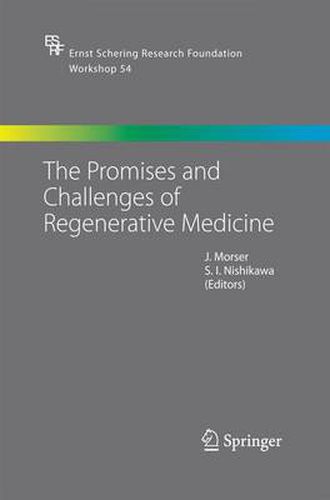Readings Newsletter
Become a Readings Member to make your shopping experience even easier.
Sign in or sign up for free!
You’re not far away from qualifying for FREE standard shipping within Australia
You’ve qualified for FREE standard shipping within Australia
The cart is loading…






This title is printed to order. This book may have been self-published. If so, we cannot guarantee the quality of the content. In the main most books will have gone through the editing process however some may not. We therefore suggest that you be aware of this before ordering this book. If in doubt check either the author or publisher’s details as we are unable to accept any returns unless they are faulty. Please contact us if you have any questions.
Ithaslongbeenknownthatamphibiaandotherlowerordervertebrates havethecapacitytoregeneratelimbsaswellasdamagedheartsorbrains. Overthepastdecade,therehasbeenamajorchangeinthewaythatthe potentialforregenerationinmammalsisviewed.Earlier,incontrastto the acceptance of regeneration in amphibia, it was generally believed that there was very limited if any capacity for regeneration in many mammalianorgansystemssuchastheheartandbrain.Thediscoveryof tissue-resident adult stem cells and the description of the properties of embryonic stem cells have altered this view. This change in paradigm VI Preface has led to the hope that these discoveries can be harnessed in medical practicetocurechronicdisablingdiseases. The use of tissue-resident adult stem cells depends on the ability to either mobilize them or to convert them from one lineage to another. These problems do not arise with embryonic stem cells. Instead, their useisfraughtwithethicalandpoliticalissuesaswellasthequestionof howtodirecttheirdifferentiationtowardthedesiredcelltype.Whichever approachistaken,issuesofsafetyhavetobeparamount.Inparticular,the roleofstemcellsintumorigenesisiscriticalinassessingtheirpotential clinicalutility. The Ernst Schering Research Foundation and the Riken Center on DevelopmentalBiologyjointlyorganizedaworkshopon ThePromises andChallengesofRegenerativeMedicine, whichtookplaceinKobe, Japan on 20-22 October 2004. The purpose of the workshop was to discuss the present state of knowledge and future directions in this important ?eld. Leading basic scientists and clinicians reviewed and discussedseveraltimelytopicswithinthreemainthemes:(1)evolution, development,andregeneration,includingstemcellsinPlanariaandstem cell niches; (2)embryonic and adult stem cells, including adiscussion of the regulatory system in Japan for human embryonic stem cells; and (3) regeneration in speci?c indications including a discussion of the role of stem cells in organs such as the skin, brain, liver, pancreas, cornea,andthecardiovascularsystem.Inaddition,theroleofstemcells in glioblastoma was presented along with the implications for other tumors.
$9.00 standard shipping within Australia
FREE standard shipping within Australia for orders over $100.00
Express & International shipping calculated at checkout
This title is printed to order. This book may have been self-published. If so, we cannot guarantee the quality of the content. In the main most books will have gone through the editing process however some may not. We therefore suggest that you be aware of this before ordering this book. If in doubt check either the author or publisher’s details as we are unable to accept any returns unless they are faulty. Please contact us if you have any questions.
Ithaslongbeenknownthatamphibiaandotherlowerordervertebrates havethecapacitytoregeneratelimbsaswellasdamagedheartsorbrains. Overthepastdecade,therehasbeenamajorchangeinthewaythatthe potentialforregenerationinmammalsisviewed.Earlier,incontrastto the acceptance of regeneration in amphibia, it was generally believed that there was very limited if any capacity for regeneration in many mammalianorgansystemssuchastheheartandbrain.Thediscoveryof tissue-resident adult stem cells and the description of the properties of embryonic stem cells have altered this view. This change in paradigm VI Preface has led to the hope that these discoveries can be harnessed in medical practicetocurechronicdisablingdiseases. The use of tissue-resident adult stem cells depends on the ability to either mobilize them or to convert them from one lineage to another. These problems do not arise with embryonic stem cells. Instead, their useisfraughtwithethicalandpoliticalissuesaswellasthequestionof howtodirecttheirdifferentiationtowardthedesiredcelltype.Whichever approachistaken,issuesofsafetyhavetobeparamount.Inparticular,the roleofstemcellsintumorigenesisiscriticalinassessingtheirpotential clinicalutility. The Ernst Schering Research Foundation and the Riken Center on DevelopmentalBiologyjointlyorganizedaworkshopon ThePromises andChallengesofRegenerativeMedicine, whichtookplaceinKobe, Japan on 20-22 October 2004. The purpose of the workshop was to discuss the present state of knowledge and future directions in this important ?eld. Leading basic scientists and clinicians reviewed and discussedseveraltimelytopicswithinthreemainthemes:(1)evolution, development,andregeneration,includingstemcellsinPlanariaandstem cell niches; (2)embryonic and adult stem cells, including adiscussion of the regulatory system in Japan for human embryonic stem cells; and (3) regeneration in speci?c indications including a discussion of the role of stem cells in organs such as the skin, brain, liver, pancreas, cornea,andthecardiovascularsystem.Inaddition,theroleofstemcells in glioblastoma was presented along with the implications for other tumors.